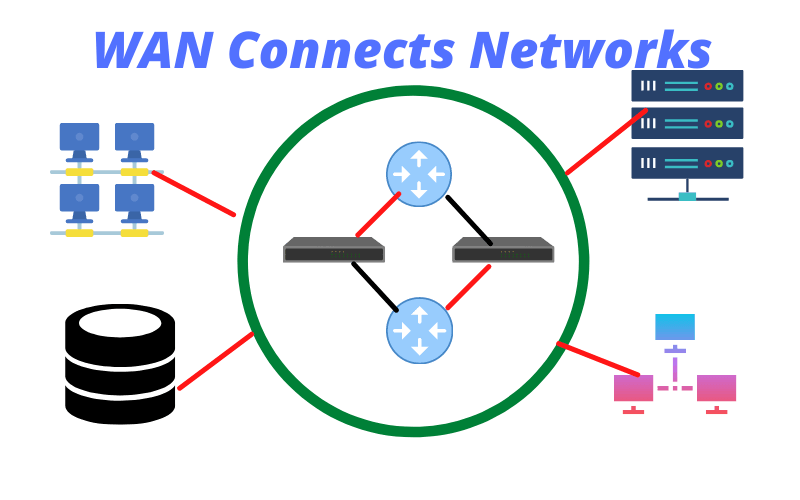What is a wide area network(WAN) in networking?
It is a computer network that is able to connect distant locations across a wider geographical area than a Local Area Network (LAN). Locations can be located in different cities, countries, etc. Your internet provider is an example of a Wide Area Network (WAN) provider.
If you connect your computer to the internet, you will be able to connect to any other computer in the world (provided the far device is connected to the internet with a Public IP address as well).
It is possible for a company to share network resources across multiple locations worldwide through the use of a wide area network (WAN). This includes servers, printers, etc., connected to a local area network (LAN). By connecting all LANs with a WAN, the machines at one location can access devices at another location as if they were present on the local network.
In the following section, you will learn more about the wide area networks, how they impact business, and how they differ from other types of networks.
What is WAN?
You can think wide area network as a private network owned by a big company. It is similar to the road networks that connect your house to another distant place. With a WAN, you can connect your LAN or computer to other computers or LANs across the globe using the Internet or other protocols.
Being very big in size and complexity, the WAN service providers lay down the network. Once the network is set, they staring giving WAN services to homes, offices, and other companies. After plugin into the WAN, a user can send and receive data to/from any location. Access can be a VPN, internet, or a wireless connection.
Using WAN, an international company may operate from offices in distant locations without affecting any activity within the organization. It is possible for anyone within the organization to connect from anywhere to work with others.
Why do we need a Wide Area Network(WAN)?
If you imagine there would be no WAN, how can offices at distant locations connect for communication and sharing resources? If Office Site A needs a file from office site B. The sharing will be feasible only by transfer in a Hard Disk Drive via parcel in person.
An organization sets up a LAN that enables members to communicate timely and effectively. But once offices keep growing to different locations (e.g., cities and countries.). A company can’t set up its network cables from one place to another as it may incur huge costs and may get limitations because of regulations imposed.
A WAN provider has all the necessary permission and infrastructure for other companies. They provide essential services to all network users, such as students, campuses, banks, etc.
How does WAN work?
A WAN provider gives a link to the user. The user device (e.g., Wifi Router) terminated the connection on the WAN port. There are various options to connect to the WAN provider. It could be a DHCP, Point to Point, or via public IP. Most companies have public IPs so that anyone can connect to the company network from anywhere. The WAN or Internet providers assign the public IPs.
How to connect LANs to a WAN?
A company can connect its LANs using a VPN router. With VPN, there will be a tunnel set up between two locations. It will make communication secure too.
What are the differences between LAN and WAN?
- Local area networks (LANs) cover a relatively small geographical area, such as an office, floor, or building. The WAN has the ability to cover areas even larger than multiple countries at the same time.
- The setup cost is less in LAN as it needs only fewer devices. With WAN, the setup cost is higher because it requires lots of hardware and other resources.
- Uses fewer technologies, e.g., ethernet, etc. A WAN needs to cover a long-distance transmission. For that, it uses Frame Relay, etc.
- Totally for private use, with no sharing, while WAN can be shared with multiple users.
- Bandwidth is very high in LAN, while a WAN is shared and long-distance, offering a lower bandwidth.
- LAN may not need redundancy, while a WAN needs to be redundant to offer 24*7 connectivity.
What are the network protocols for WANs?
A WAN network uses various protocols for faster access. Most of them are the data link layer protocols. Following is the list.
- SONET
- ATM
- Broadband
- Frame Relay
- P2P
- X.25
